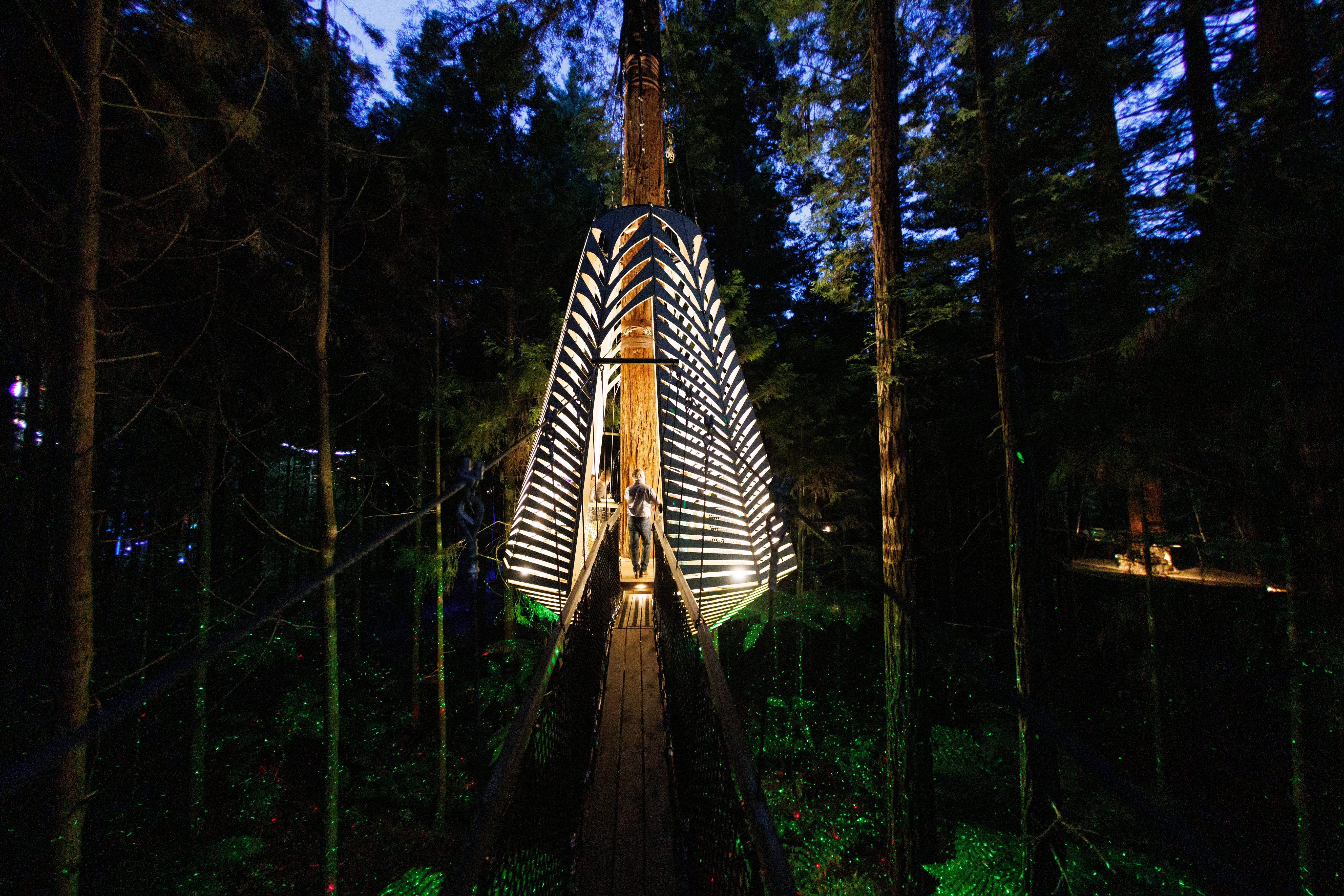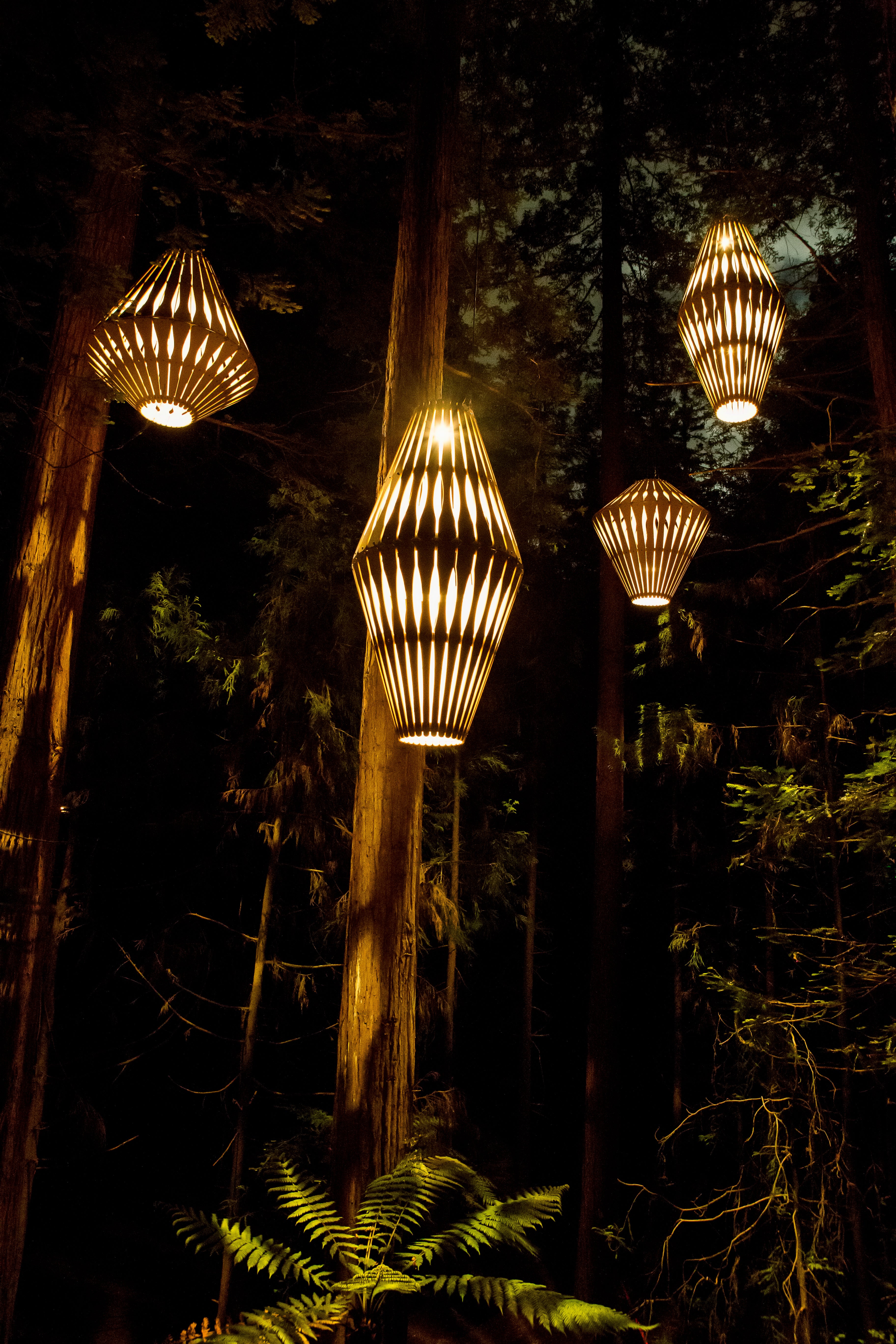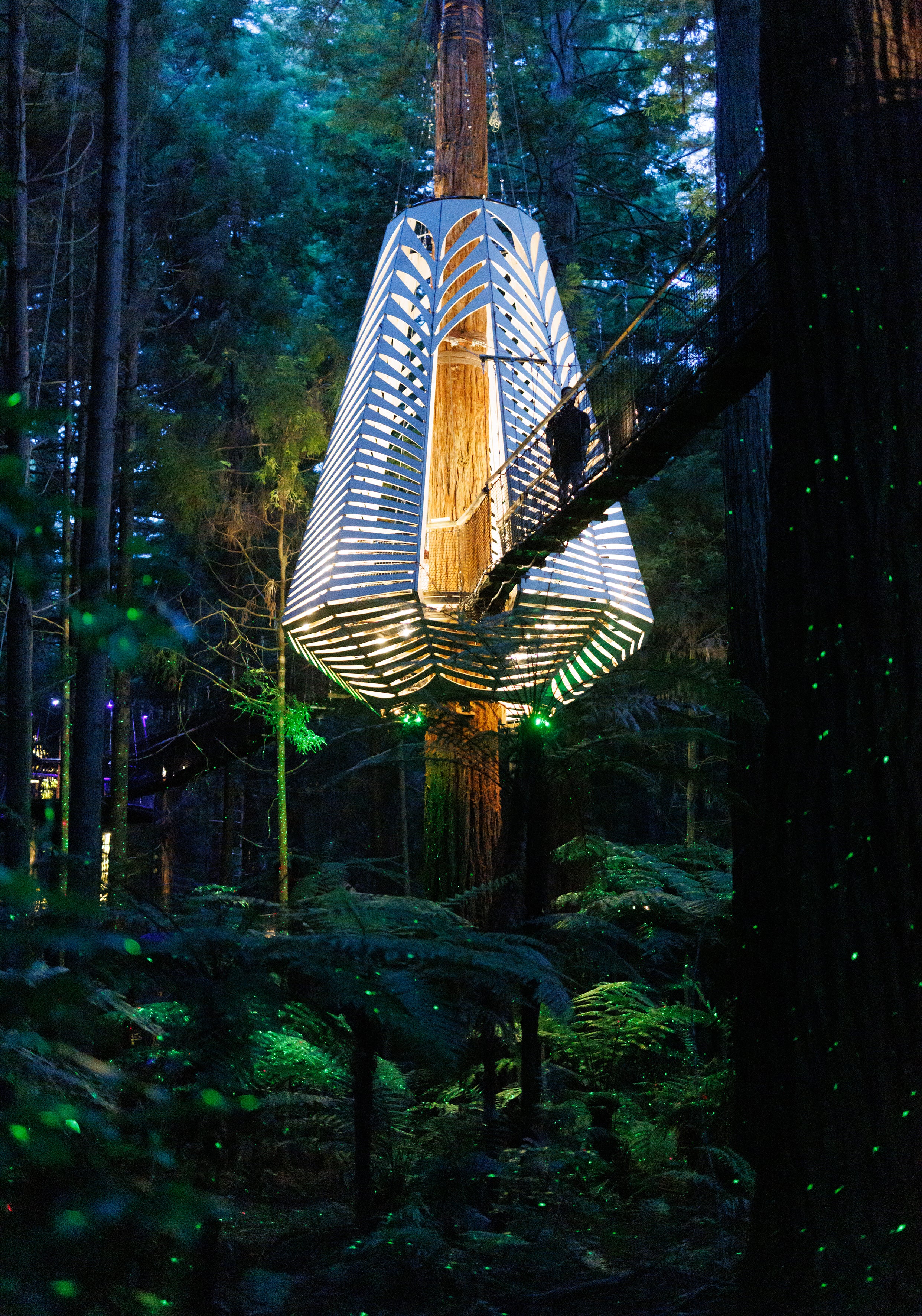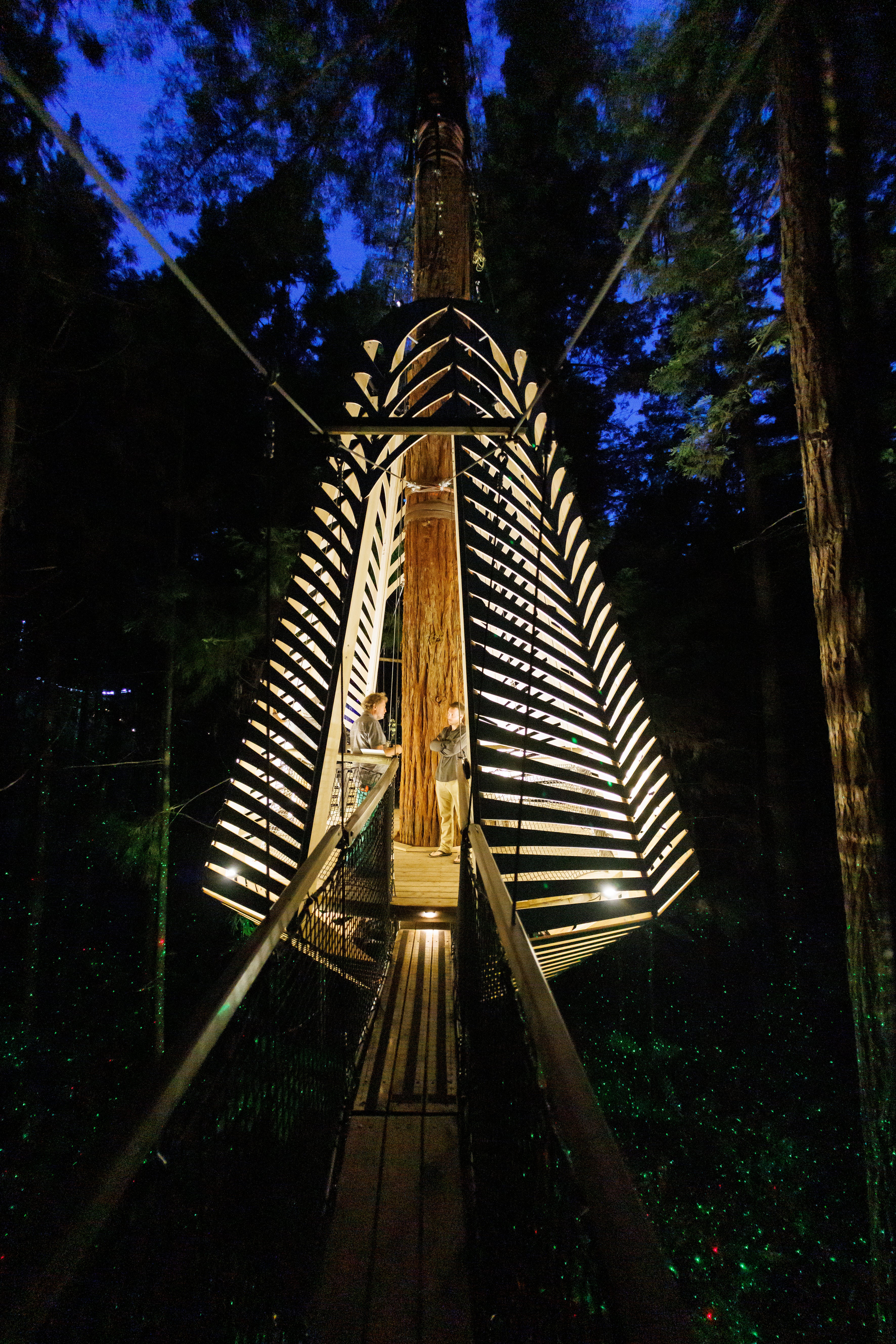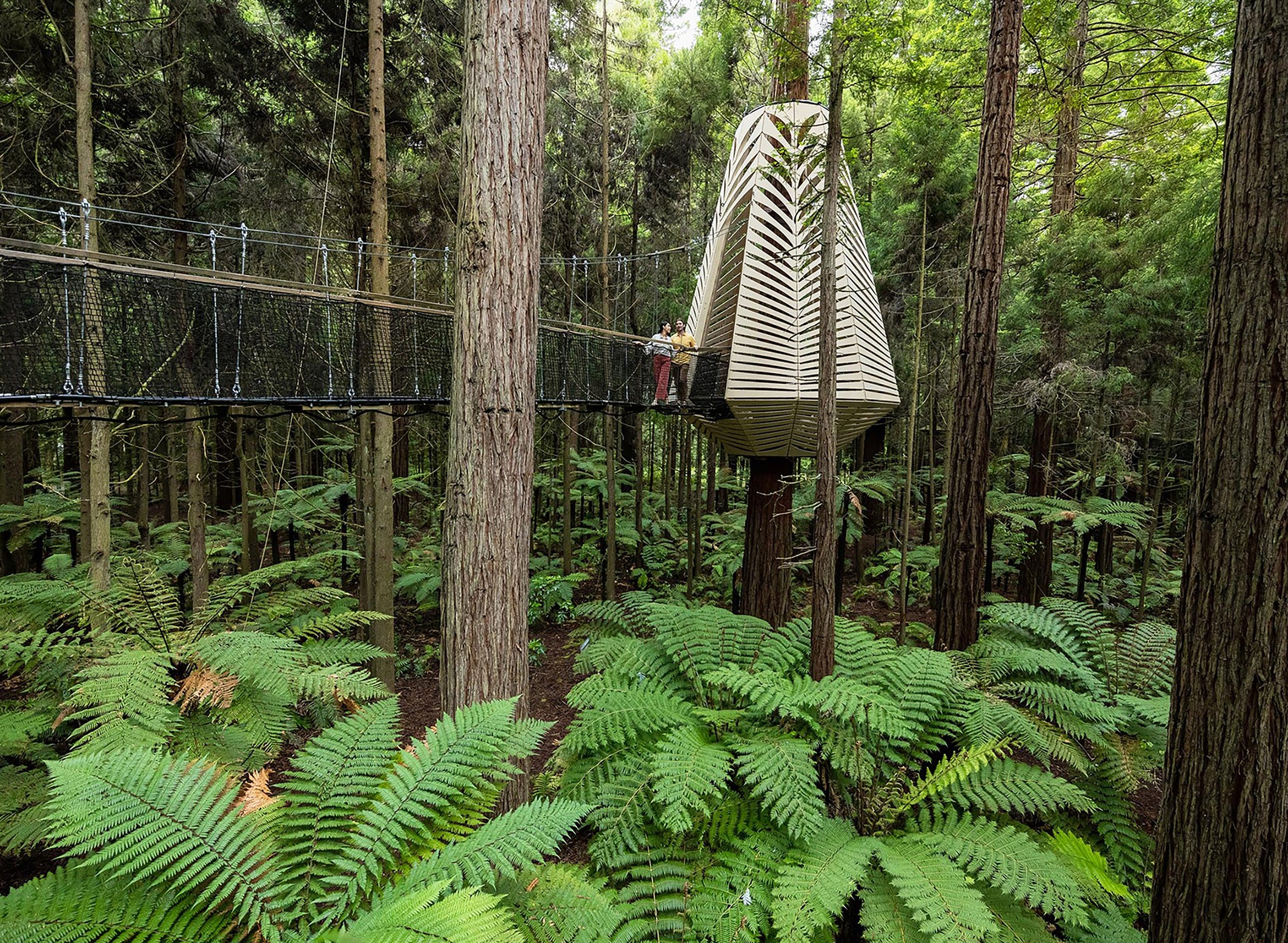
Rotorua Redwoods Horoeka
Treewalk
Horoeka
Horoeka is an extension of the existing lights we installed for the Rotorua Redwoods Tree Walk in 2016. It uses the same vocabulary as the lights to make an even larger, walk-through, lit form or 'pod'.
Articles by David
May 15 2024
To access the micro architecture, a series of suspension bridges, carefully designed to minimize disruption to the forest floor, provides a safe and enchanting journey. These pathways meander between the sequoia trees, guiding visitors to the elevated structure.
Horoeka fully surrounds one of the platforms on the walkway and is 9m high to match the enormous scale of the redwood forest. Also it creates an internal, introspective experience which contrasts strongly to the expansive nature of the rest of the tree walk.
The timber structure encourages interaction and appreciation of the natural surroundings, it harmonizes with the sequoia forest, respecting its grandeur and ecological importance.

The Structure
It is built from 24 segments which were assembled on-site and winched into place. They are bolted onto two steel rings - the top one is suspended from canvas straps bound around the trunk, higher up the tree. This avoids any fastenings being drilled into the tree; the straps are loosened as the tree grows. It was a very tricky operation lifting and fitting these heavy sections when every worker was also suspended on ropes.
Each segment is made up of CNC-cut panels screwed onto vertical timber beams. 18mm Tricoya was used for the panels, because it is an outdoor-rated MDF (50 years above ground) made from acetylated radiata pine and the only truly durable sheet material available. Using Tricoya allowed us to create the distinctive patterned effect, which is a large part of the aesthetic of the project and which would not have been possible with normal timber.
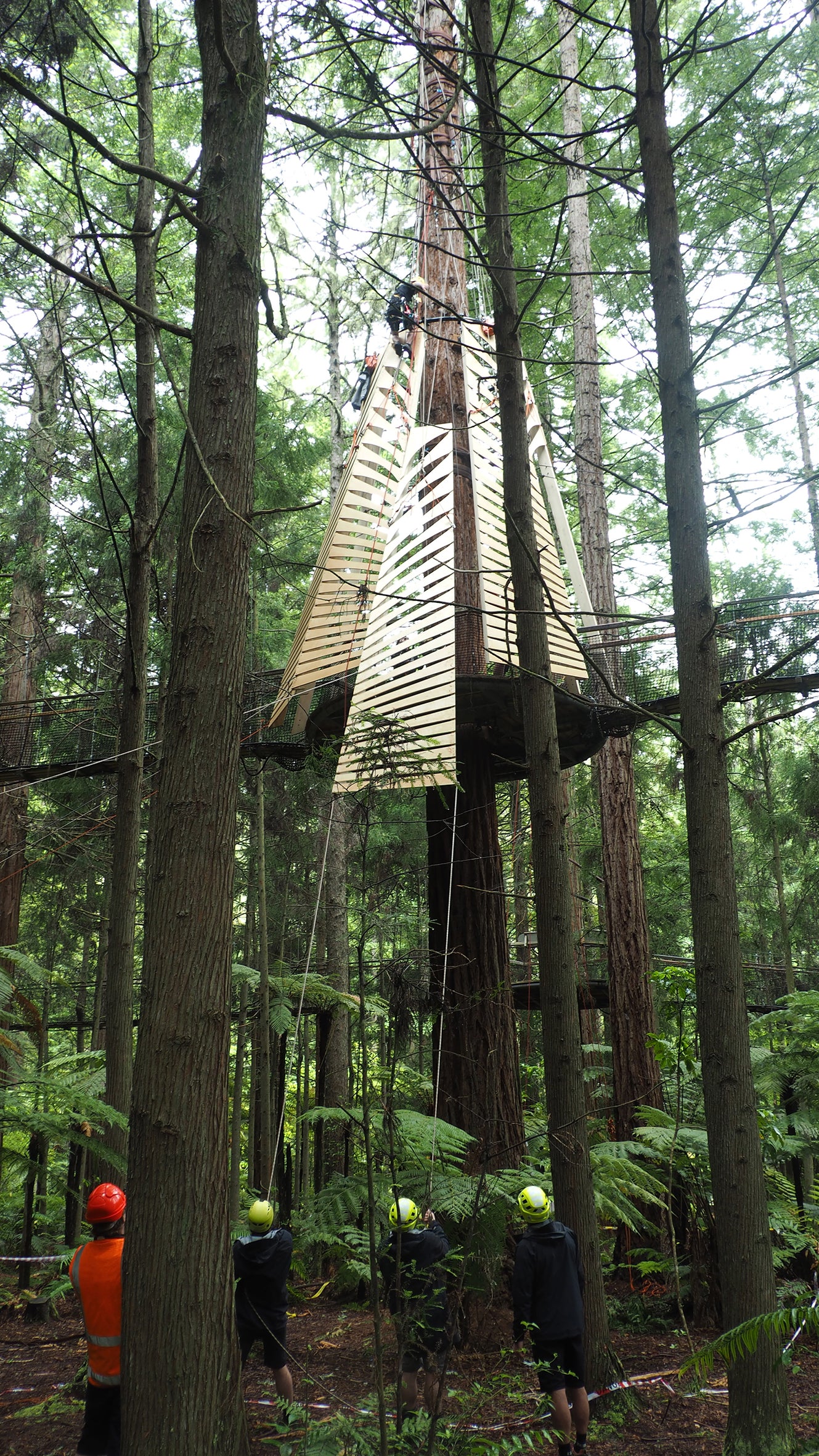
The vertical beams are Glulam H3.2 ‘visual grade’ radiata pine from Techlam, because dimensional stability is really important. In the natural setting of the forest wood is an essential material aesthetically, but it also allows easy assembly by screwing together the panels on-site (welding is not possible in the forest).
Durability is a major issue because the sulphurous air of Rotorua is very corrosive and the forest is always damp. The project demanded a minimum lifespan of 20 years and the existing lights (built in the same way as Horoeka) have lasted comfortably for seven years already. The Tricoya has proven to be a very suitable material with no sign of decay and no breakages caused by falling branches.
Over time in the forest, both the Tricoya and the pine turn silver and accumulate vegetative growths which make the structure blend in well during the day, while still standing out beautifully at night when lit. This integration into the forest is part of the design intent.
The timber used for the internal platform is untreated macrocarpa so that visitors are not exposed to the toxins of tanalising on parts that they touch, such as the handrails.
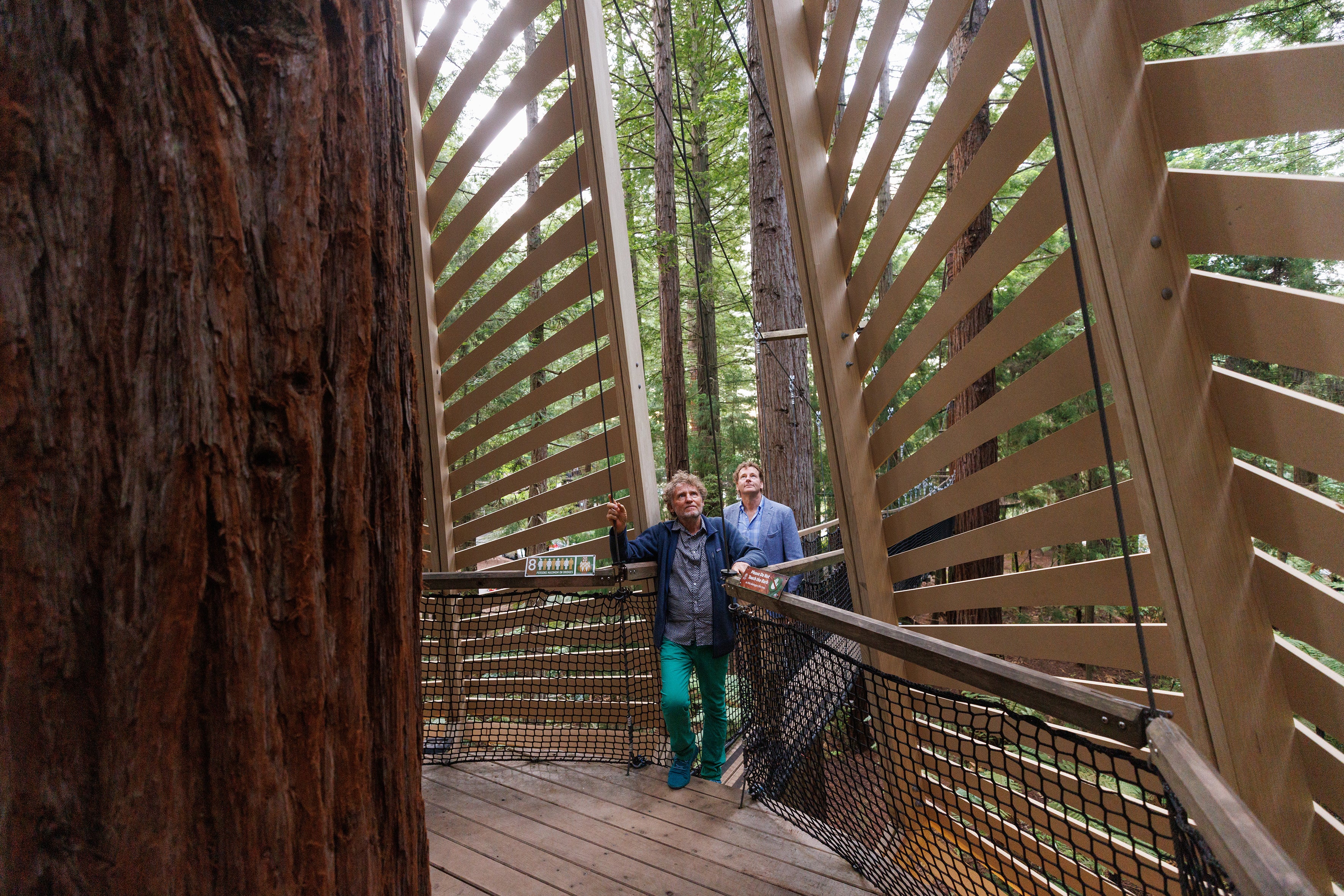
Image Gallery
